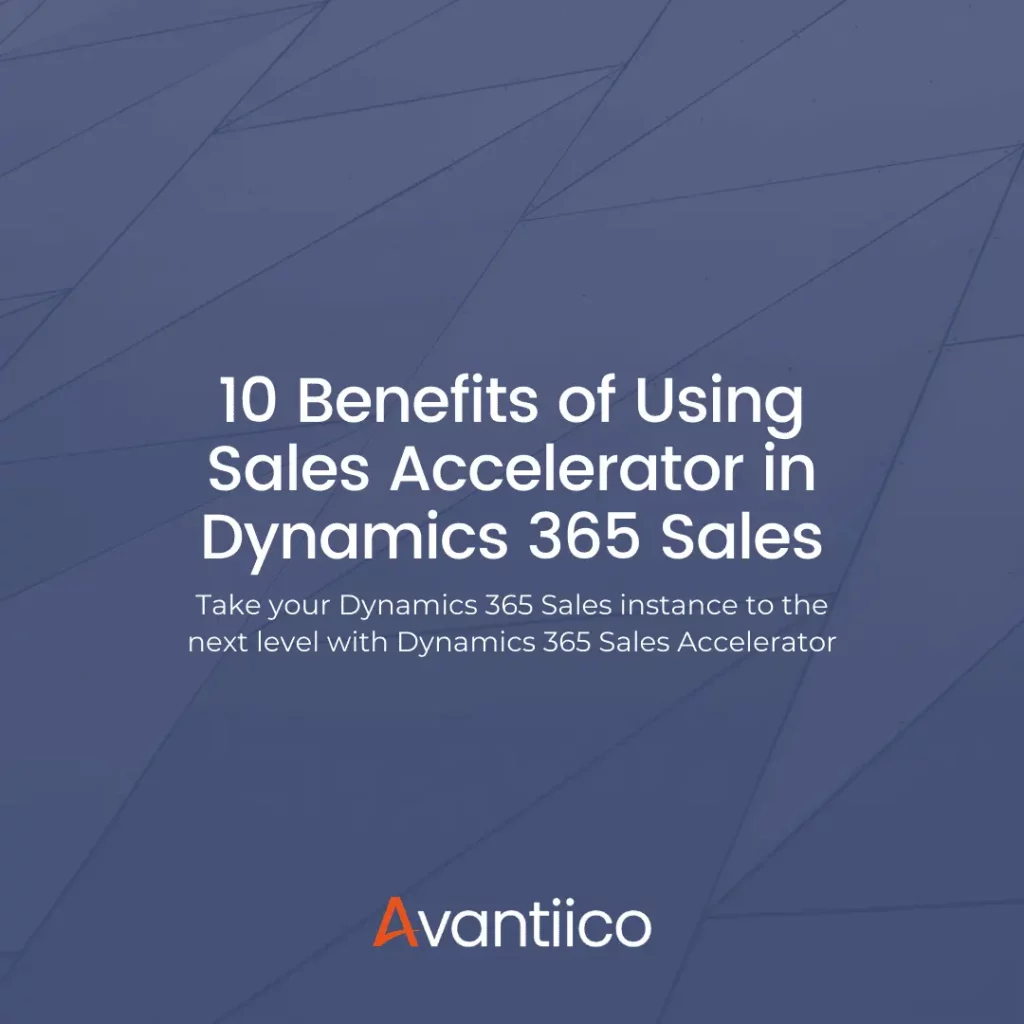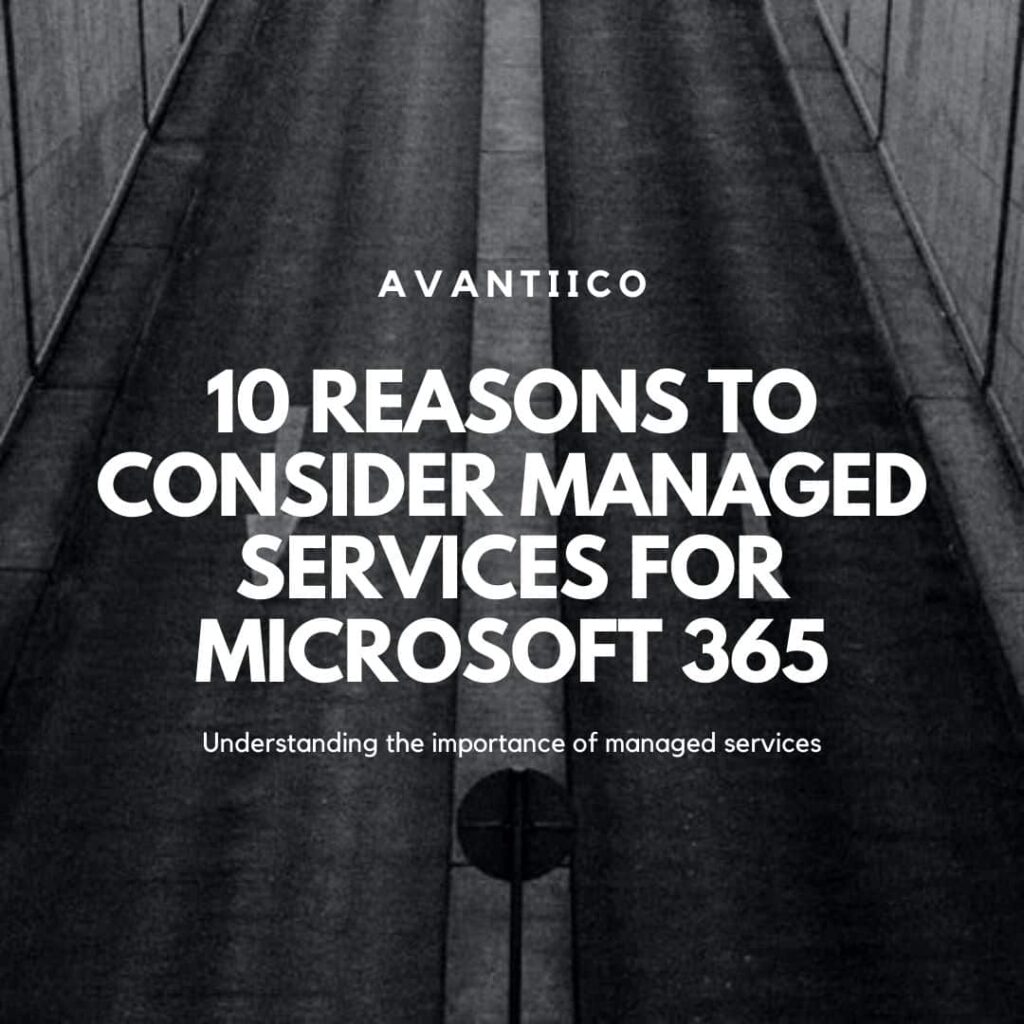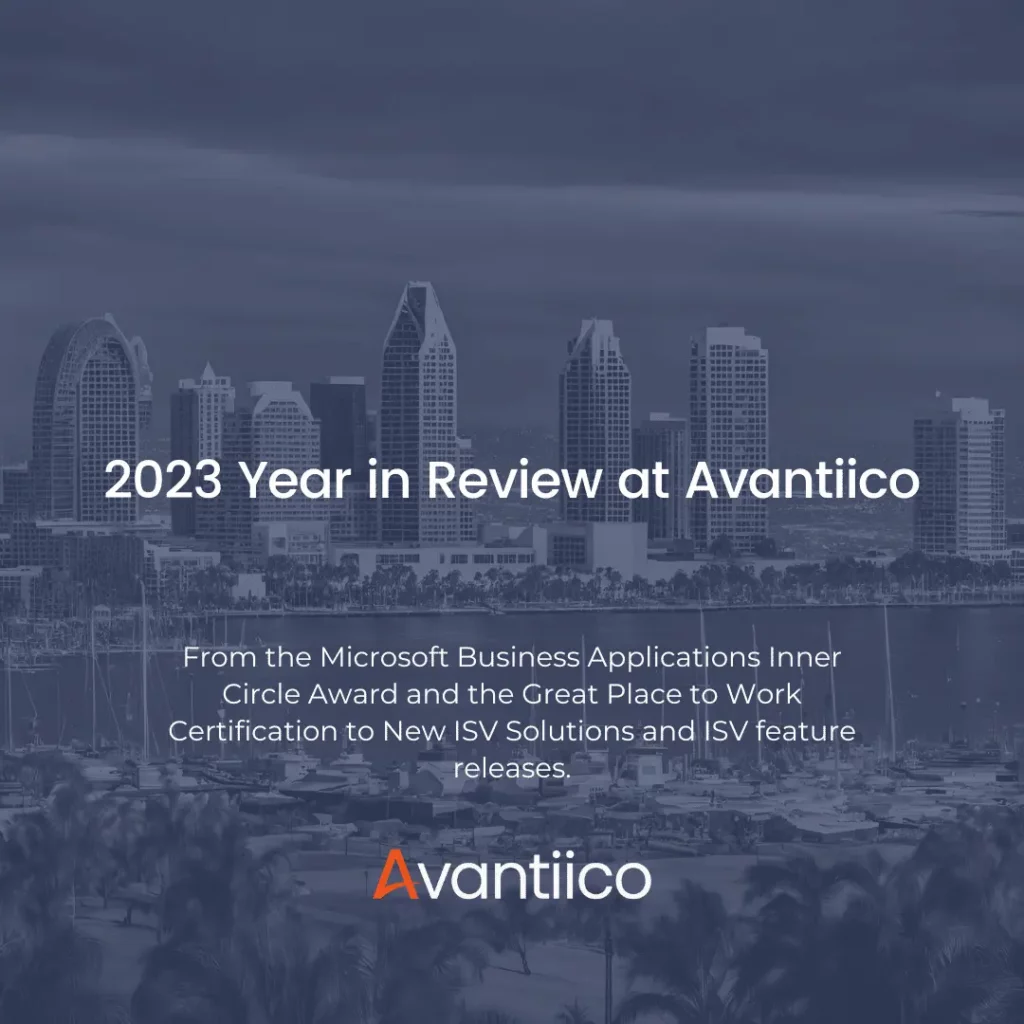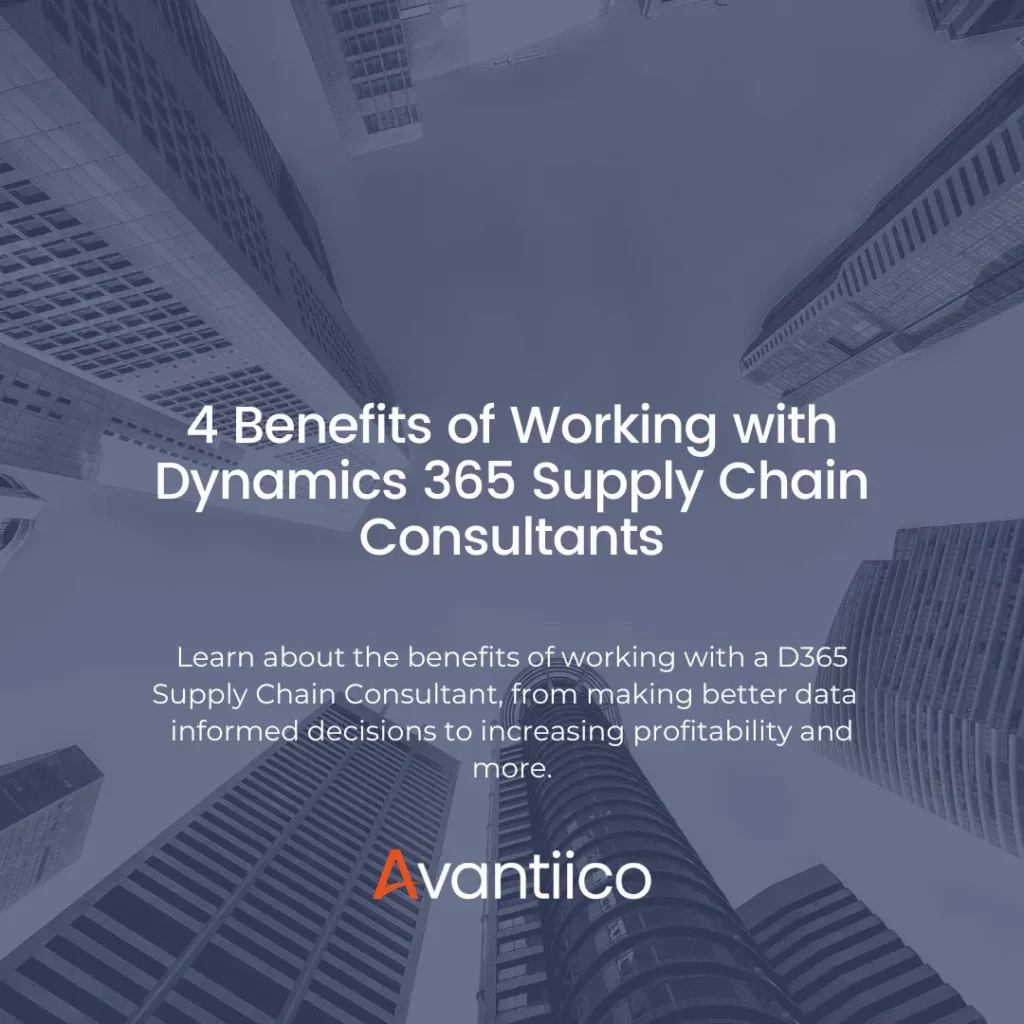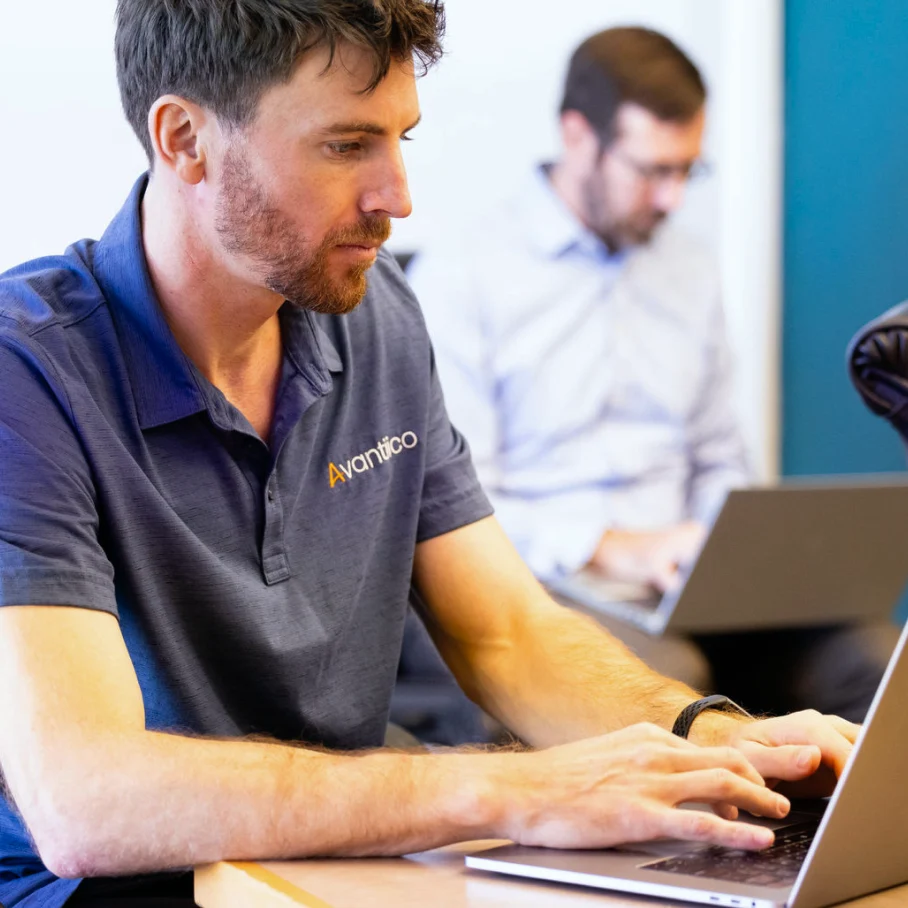Client Readiness, Microsoft Dynamics 365, Microsoft Power Platform
Preparing Your Power Platform Center of Excellence (CoE)
In this article, Power Platform Subject Matter Expert Erin Dominguez discusses the benefits of setting up a Center of Excellence (CoE) when deploying Power Platform. Erin also touches on the roles needed to manage a CoE, and the technical prerequisites to deploying one.
Background: What is Power Platform CoE?
The Center of Excellence (CoE) provides vital technologies to drive innovation, improvement, and advances within the Microsoft Power Platform in any organization. It is a collection of pieces that will help you administer maintenance flows, reports, and deploy applications to help you maintain your Power Platform environments for healthy user and management adoption. All Microsoft clients have access to the starter kit, but the true Center of Excellent (CoE) begins with the kit and the people surrounding the Power Platform implementation.

The Center of Excellence (CoE) provides vital technologies to drive innovation, improvement, and advances within the Microsoft Power Platform in any organization. It is a collection of pieces that will help you administer maintenance flows, reports, and deploy applications to help you maintain your Power Platform environments for healthy user and management adoption. All Microsoft clients have access to the starter kit, but the true Center of Excellent (CoE) begins with the kit and the people surrounding the Power Platform implementation.
Understanding Your Power Platform Strategy & Vision
Every day, we see more customer success stories stemming from the no-code/low-code application development movement. The market is quickly becoming saturated with tools to help you transform your organization and cut third-party application spending utilizing Power Apps.In an effort to propel your organization towards this modern change, you must ensure that the Microsoft Power Platform is a part of your road map and transformation strategy. This starts with the Power Platform Center of Excellence.
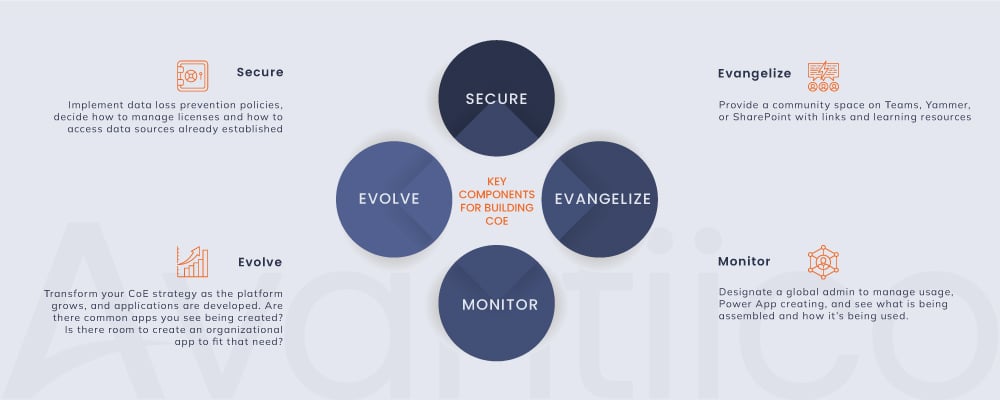
Power Platform Center of Excellent Building Blocks
What is a Center of Excellence (CoE)? The Microsoft Power Platform Center of Excellence (CoE) is a critical principle that will help you drive your organizational strategy around the Power Platform and ensure you’re accomplishing the business outcomes you have pre-determined. The Power Platform CoE is designed to pull together your community of Makers while also sharing knowledge and providing standards, consistency, and governance over the platform. Although Microsoft offers a technical CoE component, a true CoE cannot succeed without humans driving it forward and managing its success. The most common key drivers are:
- Power App and Power Automate Flow
- Application Lifecycle Management (ALM) and DevOps users
- Centralized IT
- Support and training engineers
- Business change management
- Workforce adoption strategy
Microsoft recommends each organization starting with the four key components when building your Power Platform Center of Excellence (CoE):
- Secure – Implement data loss prevention policies, decide how to manage licenses and how to access data sources already established
- Evangelize – provide a community space on Teams, Yammer, or SharePoint with links and learning resources
- Monitor – Designate a global admin to manage usage, Power App creating, and see what is being assembled and how it’s being used.
- Evolve – Transform your CoE strategy as the platform grows, and applications are developed. Are there common apps you see being created? Is there room to create an organizational app to fit that need?
Supporting the Power Platform
A true Center of Excellence cannot be successful without human contribution. You need to consider five roles and responsibilities when establishing a CoE.
- Low-code strategy team
These are your key decision-makers. They make sure that the CoE aligns with the organization’s goals and overall transformation strategy.
- Microsoft Power Platform admin team
Responsible for primarily setting up the technical components such as environment strategy, DLP policies, managing users, and owning the ‘Monitor’ component.
- Microsoft Power Platform nurture team
This team is where the Workforce Adoption specialists play an intricate role. This can be FTE’s dedicated to providing education and resources towards your CoE and community, champions, and subject matter experts.
- Automation and reusable components
Microsoft recommends dedicating a team or persons to investigating maintenance components of your tenant. This could include setting up a dual write, setting up application lifecycle management, creating reusable components in Power Apps, and creating templates.
- User Support
When establishing the Power Platform in an organization, it’s essential to understand how this will impact your current business model. What do training and support look like in your current environment? How could we leverage this platform to enhance training and support? How are we going to educate and onboard new employees continuously?
Download the Power Platform Readiness Checklist
Understanding Power Platform Center of Excellence Prerequisites
The CoE starter Kit requires access to your tenant’s Power Platform environments. This user must have continuous admin access as well as licensing privileges. Per Microsoft’s recommendations, you will need the following to get started:
- Credentials for either the Microsoft Power Platform service admin, global tenant admin, or Dynamics 365 service admin
- Power Apps Per User license (non-trial/premium) and a Microsoft 365 license
- Power Automate Per User or Per Flow license (non-trial/premium)
- The user must be email-enabled
- If you would like to collect telemetry info – Access to the Microsoft 365 audit log
Prepare your Production Environment for CoE
- Access the Power Platform Admin Center
- Must be through admin credentials
2. Click on the Environments tab and select the “+ New” button

3. Fill out the Name, Region, Type, Purpose, and enable a database for the environment

4. Select your language currency and enable Dynamics 365 if your business chooses to. Do NOT enable sample apps and datasets. This is essential as you are provided core components that can interfere with the sample apps and datasets.

5. Microsoft recommends not restricting your environment access with a security group because crucial components within the CoE starter kit leverage approval actions to enhance DLP and ALM, which requires users to interact with this environment.
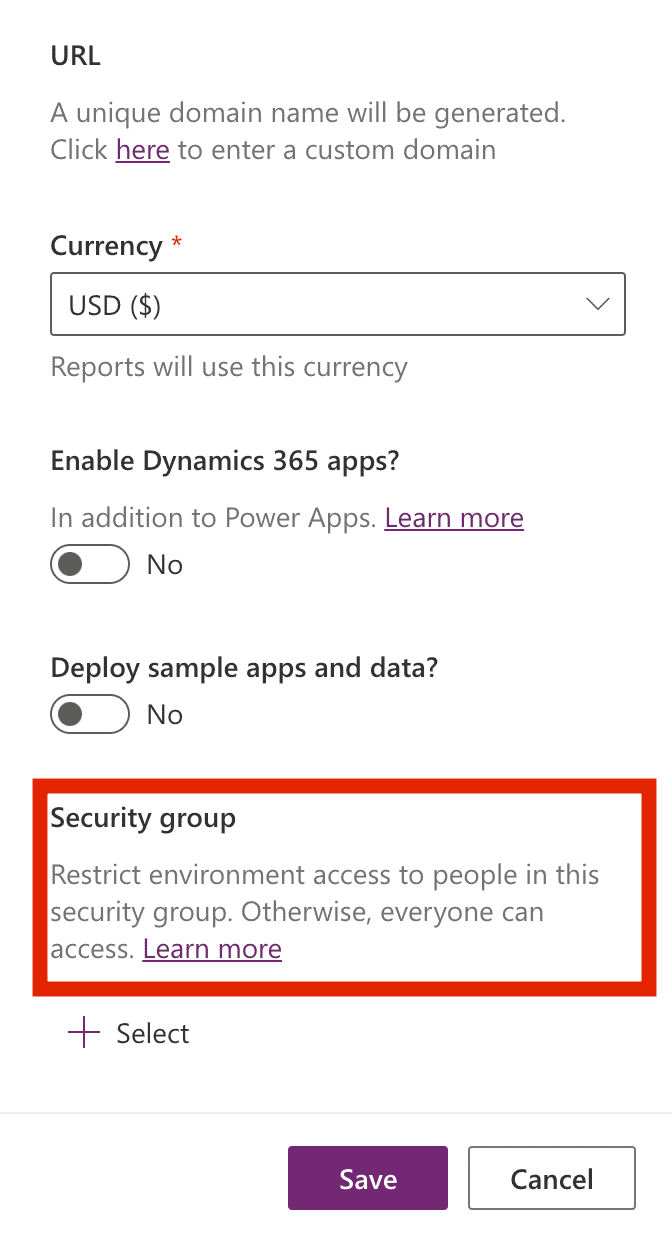
6. Save your production environment to create it
Microsoft recommends that you ensure your DLP policy applied to your CoE starter kit allows the following connectors:
- Approvals
- Azure AD
- HTTP
- HTTP with Azure AD
- Microsoft Dataverse
- Microsoft Dataverse (legacy)
- Microsoft Teams
- Office 365 Groups
- Office 365 Outlook
- Office 365 Users
- Power Apps for Admins
- Power Apps for Makers
- Power Automate for Admins
- Power Apps for Makers
- Power Automate for Admins
- Power Automate Management
- Power Platform for Admins
- RSS
- SharePoint

